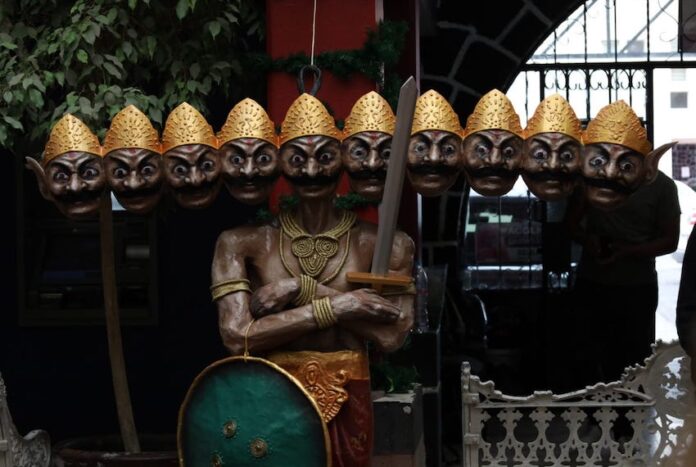Despite being more than 15,000 kilometers apart, Mexico and India share more than one might imagine, like family values, a love for unique flavors, an ancestral, vibrant culture and distinctive religious practices.
Recently, the two countries collaborated on a piñata in the shape of the Hindu mythological character Ravana, highlighting Indian culture at the hands of Mexican artists.
View this post on Instagram
On Dec. 20, authorities in Acolman, México state — located right outside of the Teotihuacán pyramid complex — unveiled a piñata modeled after the Hindu demon king Ravana.
The piñata was created with the support of the Gurudev Tagore Indian Cultural Center in Mexico City, and the Municipality of Acolman, Mexico. Made by local papier-mâché artisan Alberto Alejandro de la Cruz Morales, the piñata participated in Acolman’s annual International Piñata Festival, which ran from Dec. 19 through Dec. 22.
According to the project’s collaborators, the piñata merges the worldviews of both cultures. In Mexico, breaking the piñata symbolizes overcoming obstacles to earn a reward. Traditionally, the piñata has seven spokes, representing the seven deadly sins, and breaking it symbolizes defeating temptations and the struggle between good and evil.
In contrast, Ravana is a central figure in Hindu mythology, primarily known as the antagonist in the epic Ramayana. This complex character plays a crucial role in Indian culture, representing various aspects of tradition and folklore. Ravana is depicted with 10 heads and 20 arms, demonstrating his power and wisdom.
View this post on Instagram
Taking these characteristics into account, Alejandro de la Cruz Morales created the 1.8-meter-tall piñata featuring Ravana and his 10 heads, each symbolizing a vice to overcome.
Indian Ambassador to Mexico Pankaj Sharma participated in the piñata’s reveal ceremony, along with Abhinaw Raj, director of the Gurudev Tagore Indian Cultural Center, and the artists behind the piñata’s creation.
According to Raj, the piñata project is the fruit of a larger effort by India to promote academic and cultural exchange with Mexico.
Educational programs and Mexico-India exchange opportunities
Raj told the newspaper Crónica that the Embassy of India in Mexico City has implemented several scholarship programs that cover airfare, accommodation and a monthly stipend, enabling Mexican students to pursue undergraduate, master’s or doctoral degrees in India.
In addition, through India’s bilateral assistance program ITEC (Indian Technical and Economic Cooperation), Mexican professionals and public officials can enroll in short-term courses in India in emerging fields like artificial intelligence, technology, education and culture.
Officially launched on Sept. 15, 1964, this India-led program extends to residents of 158 countries and has invested more than US $2 billion in training professionals worldwide.
With reports from Crónica
